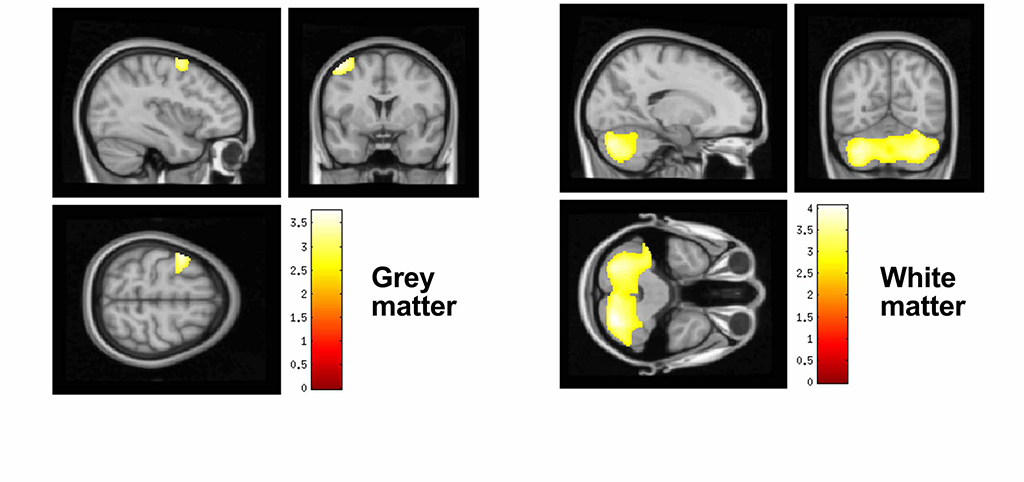Being Raised in Greener Neighborhoods May Have Beneficial Effects on Brain Development
For the first time, exposure to green spaces in childhood is associated with structural changes in developing brain
23.02.2018
Primary schoolchildren who have been raised in homes surrounded by more greenspace tend to present with larger volumes of white and grey matter in certain areas of the brain. Those anatomic differences are in turn associated with beneficial effects on cognitive function. This is the main conclusion of a study published in Environmental Health Perspectives and led by the Barcelona Institute for Global Health (ISGlobal), a center supported by the ”la Caixa” Foundation, in collaboration with the Hospital del Mar (Spain) and the UCLA Fielding School of Public Health (UCLA FSPH).
The study was performed in a subcohort of 253 schoolchildren from the BREATHE project in Barcelona (Spain). Lifelong exposure to residential greenspace was estimated using satellite-based information on thechildren’s addresses from birth up through to the time of the study. Brain anatomy was studied using high-resolution 3D magnetic resonance images (MRI). Working memory and inattentiveness were evaluated with computerized tests.
“This is the first study that evaluates the association between long-term exposure to greenspace and brain structure,” says Dr. Payam Dadvand, ISGlobal researcher and leading author of the study. “Our findings suggest that exposure to greenspace early in life could result in beneficial structural changes in the brain.”
The data analysis showed that long-term exposure to greenness was positively associated with white and grey matter volume in some parts of the brain that partly overlapped with those associated with higher scores on cognitive tests. Moreover, peak volumes of white and grey matter in the regions associated with greenspace exposure predicted better working memory and reduced inattentiveness.
Contact to nature has been thought to be essential for brain development in children. A previous study of 2,593 children ages 7 to 10 from the BREATHE project showed that, during the 12-month course of the study, children who attended schools with higher outdoor greenspace had a greater increase in working memory and a greater reduction in inattentiveness than children who attended schools with less surrounding greenness.
The Biophilia hypothesis suggests an evolutionary bond of humans to nature. Accordingly, green spaces are suggested to provide children with opportunities for psychological restoration and prompt important exercises in discovery, creativity and risk taking, which, in turn, are suggested to positively influence different aspects of brain development. Furthermore, greener areas often have lower levels of air pollution and noise and may enrich microbial inputs from the environment, all of which could translate into indirect benefits for brain development.
“The study adds to growing evidence suggesting that early life exposure to green space and other environmental factors can exert measurable and lasting effects on our health through the life course,” says co-author Michael Jerrett, department chair and professor of Environmental Health Sciences at the UCLA Fielding School of Public Health.
“These results also might provide clues on how such structural changes could underlie the observed beneficial effects of greenspace exposure on cognitive and behavioral development” explains Dr. Jesus Pujol, from the Radiology unit at Hospital del Mar and co-author of the study.
“This study adds to the existing evidence about the benefits of transforming our cities by increasing access to the natural environment”, says Prof. Jordi Sunyer, ISGlobal researcher and last author of the study.
Further studies are needed to confirm the results in other populations, settings and climates, evaluate other cognitive and neurological outcomes and examine differences according to the nature and quality of greenspace and children’s access to and use of them.
Reference
Dadvand P., Pujol, J., Macià D., Martínez-Vilavella G., Blanco-Hinojo L., Mortamais M. Álvarez-Pedrerol M., Fenoll R., Esnaola M., Dalmau-Bueno A., López-Vicente M., Basagaña X., Jerrett M., Nieuwenhuijsen M., Sunyer J. The Association between Lifelong Greenspace Exposure and 3-Dimensional Brain Magnetic Resonance Imaging in Barcelona Schoolchildren. Environmental Health Perspectives, February 2018, https://doi.org/10.1289/EHP1876



